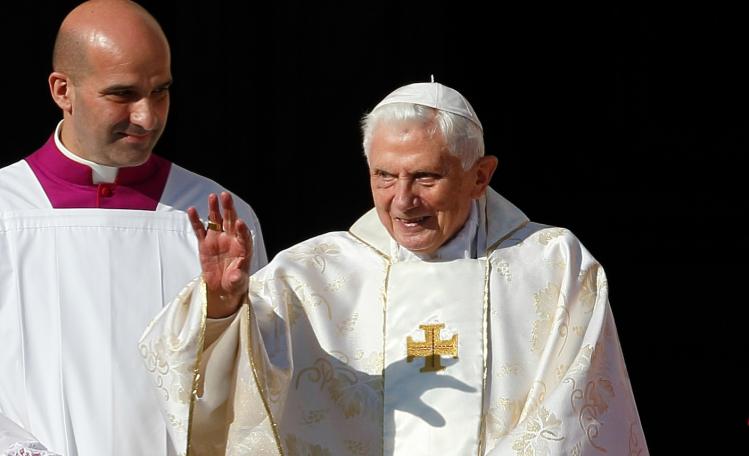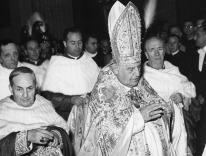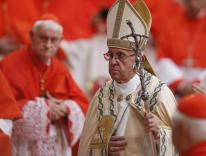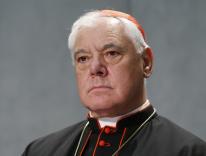
We are now in the second stage of the so-called Synod on the Family. A great deal of prayer, theological reflection and continued research should be building blocks of a bridge linking the recent “extraordinary assembly” of the synod with the “ordinary assembly” that will take place a year from now. The way Pope Francis has begun to shape this episcopal body into a place for candid and creative discernment has not pleased everyone.
Some fear he wants to force the bishops to develop (some say, “change”) the longstanding magisterial teaching on marriage, family, and sexuality. They, instead, want that teaching to remain as it is – difficult, but prophetic for a secular age. Others are hoping there is real doctrinal development as the means – to quote Pope Francis’s words at the end of the last assembly – to “find concrete solutions to so many difficulties and innumerable challenges that families must confront; to give answers to the many discouragements that surround and suffocate families.”
Many Catholic institutions throughout the world will be engaged to bolster one or the other of these proposals. The International Academy for Marital Spirituality (INTAMS) in Belgium wants to be a part of the larger conversation. Founded by in 1989 by Hubert and Aldegonde Brenninkmeijer-Werhahn, it takes an interdisciplinary approach to facilitating study of and dialogue about the meaning and relevance of marriage in the context of contemporary society. INTAMS is independent, ecumenical, and international. And it integrates theory with practice.
Brenninkmeijer-Werhahn, who studied theology at the University of Louvain, was in Rome last week to launch the Italian edition of her book, Close to Our Hearts: Personal Reflections on Marriage (printed last year in English). It contains essays from twenty-four contributors, many internationally known, who share their thoughts and experiences on all the issues facing families today. The book should certainly make a contribution to the discernment the Church is undertaking in the coming year.
****
Benedict XVI has again broken his self-imposed vow of silence. The first time was just six months after his retirement, which he said he would spend “hidden from the world” and “secluded in prayer.” You may remember the long rebuttal he wrote in September 2013 to an Italian secularist mathematician who had written a book attacking his 1968 classic, Introduction to Christianity. Many were surprised that the retired pope gave express permission for his retort to be published in a popular newspaper. Since then Pope Francis has invited his “cloistered” predecessor to attend Vatican ceremonies, and Benedict has accepted on occasion.
Otherwise, he has kept himself and his writings out of view. Until this past week, when three letters and a mini-lecture he wrote were made public. Two were notes to encourage groups that espouse controversial projects he launched while pope – the Anglican Ordinariate and the unrestricted celebration of the pre-Vatican II liturgy. The third letter was to a Vatican foundation set up with his approval in 2010 to promote his theological writings.
Finally, there was Benedict’s 1,800-word mini-lecture at the Pontifical Urban University, which his private secretary read on his behalf. The occasion was the renaming of the institute’s aula magna (great hall) after the former pope. Catholic News Service summed up the lecture’s main point this way: “Retired Pope Benedict XVI said dialogue with other religions is no substitute for spreading the Gospel to non-Christian cultures and warned against relativistic ideas of religious truth as ‘lethal to faith.’”
Pope Francis, of course, has his own particular views about dialogue. But he praised his predecessor on Monday, telling the Pontifical Academy of Sciences that he was a “great pope” whose spirit would “appear even greater and stronger generation after generation.” And just before that, Francis unveiled a bronze bust of Benedict at the academy’s headquarters in the Vatican Gardens.
****
A pilgrimage group organized by the Coetus Internationalis Summorum Pontificum received one of the three letters mentioned above. This association promotes the spread of the Tridentine Mass. It takes its name from the 2007 papal document that established near unfettered use of the pre-Vatican II liturgy by re-instituting it under the cleverly invented term, “the extraordinary form of the one Roman Rite.”
Pope Francis does not seem very much interested in this un-reformed rite. And adherents of the coetus internationalis (or international group) don’t appear very enthusiastic about him. And, in fact, the group’s October 23 to 26 schedule gave pilgrims no chance to see the pope. The only opportunity was his Sunday Angelus and blessing in St. Peter’s Square. But the Summorum Pontificum folks planned a Sunday morning trip two hours away to the Umbrian town of Norcia. Pilgrims attended a Tridentine Mass celebrated by German Cardinal Walter Brandmüller at a conservative Benedictine monastery founded by and still mostly inhabited by Americans.
Those that stayed back in Rome went to an 11 a.m. Mass at Rome’s designated “extraordinary rite” church (where the rector is an Australian), too late and too far away to make it to the Angelus. Meanwhile, the Rorate Coeli blog, which was busy posting photos and news of the pilgrimage, offered readers an eye-popping homily from a Tridentine Mass celebrated on Sunday in the United States *. Fr. Richard Cipolla, a priest in Connecticut, said Pope Francis’s now famous response to a question about gays – “Who am I to judge?” – was “a denial of truth in matters of morality.” He added that the comment “lies at the heart of this drive to change the Church’s moral teaching in the name of more merciful pastoral practice.” Fr. Cipolla, who is married and a former Episcopalian priest, then went further and said it was actually a “denial” of doctrine, which led to, “at best, liberal Protestantism or, at worst, the individualism of secularism.”
* An earlier version mistakenly said Fr. Cipolla preached his homily at a Mass for the pilgrims in Rome.
Please email comments to [email protected] and join the conversation on our Facebook page.
Share
Previous Story
Missing Sacramentality
Next Story
New stories on the homepage


